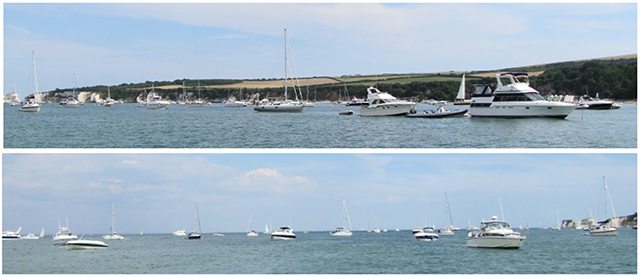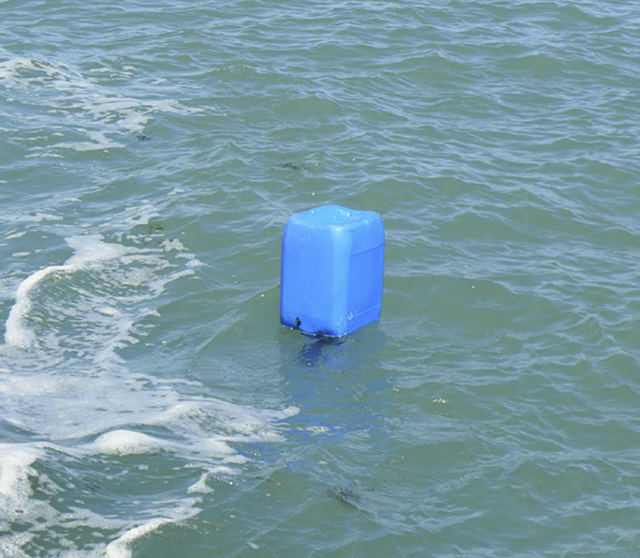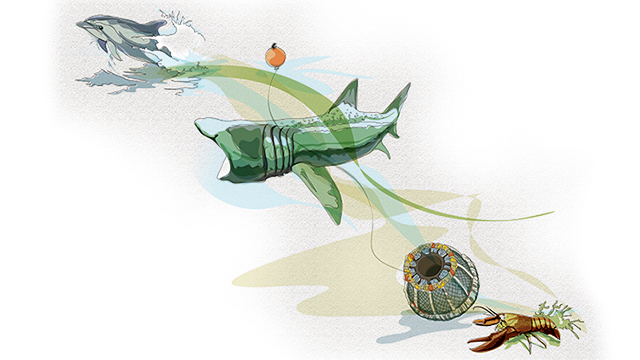Torquay's coastal zoo, Living Coasts, is warning that anchoring in the protected eelgrass beds off Torbay could threaten the local seahorse population
The contentious issue of anchoring in eelgrass beds has risen again – this time in Torbay, South Devon.
Experts at Torquay’s coastal zoo, Living Coasts, are warning that the local seahorse population could be threatened if boats drop their anchor in the wrong place.
The eelgrass areas in the protected waters of Tor Bay are voluntary no anchoring zones.
The calls come after the discovery of a pregnant seahorse inside the Torbay Marine Conservation Zone (MCZ), which was designated in 2013.
Living Coasts said it also had evidence of damage to the seabed, which it claims was caused by the anchors of small boats.
However, many boat owners believe that anchoring in eelgrass has little impact.
The Boat Owners Response Group (BORG), which was set up to promote rights of navigation, anchoring and mooring for boat owners and boaters in the context of marine conservation zones and other legislation, believes anchoring in eelgrass “causes little disturbance, a view backed by many scientific papers” and members’ observations.

Damaged eelgrass off Torbay. Credit: Rachel Cole
The curator of Living Coasts, Clare Rugg, said it was important that all interested parties now work together to protect the eelgrass, also known as seagrass, at Torbay.
“Many people use or have an interest in the waters of the bay. There are inevitably different priorities,” she stated.
“We need to work together to make sure everyone is happy. These seahorses are special and important and so are the seagrass beds. Biodiversity matters, even when you can’t see it.”
“Anchoring in the wrong place damages the seagrass beds and threatens the seahorses,” stressed Rugg.
“Our seagrass areas are voluntary no anchoring zones – they are marked with buoys. There are plenty of places where you can anchor safely. Boat users can also find out where the seagrass beds are in Torbay by using the Torbay app.”
Continues below…
No-anchor zone removed from Studland Bay
Report inconclusive on link between anchoring and seagrass
South Coast anchorage Studland Bay among Tranche 3 MCZ contenders
Your chance to find out more about six new Marine Conservation Zones proposed for the South and South West of…
Boaters urged to report entanglements with poorly-marked fishing gear
New data required to demonstrate the danger of poorly marked fishing gear to recreational boaters
Boaters urged to watch marine wildlife responsibly
The Cornwall Marine and Coastal Code Group reminds boaters how to responsibly enjoy watching marine wildlife such as dolphins and…
Living Coasts said the pregnant seahorse is the second short-snouted seahorse to be found in the Torbay MCZ in the last few months.
The species is classed as Data Deficient, which means there is inadequate information to make an assessment of its risk of extinction.
According to Living Coasts, the limited information available suggests that populations are declining.
Both the short-snouted seahorse and the eelgrass species Zostera marina, which is found off Torbay, are protected by the UK Wildlife and Countryside Act of 2008 and the seahorse is a UK Biodiversity Action Plan priority species.

Healthy eelgrass in Torbay. Credit: Rachel Cole
Living Coasts said some of the bay’s eelgrass seems healthy and full of life, but “some is damaged and needs to be nurtured back to health”.
“We need to do more research on this species (short-nosed seahorse). It is excellent news that we have it here, but we need to know how to keep it, protect it and nurture it,” stressed Rugg.
“We need to do that while making sure boat users, businesses and holidaymakers can still get what they need from the bay,” added the zoo’s curator.
Several years ago, sailors and environmentalists clashed over anchoring in eelgrass and its effect on the local seahorse population at Studland Bay in Dorset.
In 2012 a no-anchor zone was removed from Studland Bay after a study failed to draw any concrete link between boat anchoring and its impact on seagrass in the popular anchorage.
In January 2017, it was announced that Studland, along with several other areas along the south and south west coast of England, could be designated a Marine Conservation Zone.

Eelgrass bed, Studland. Credit: Paul Naylor
At the time, a spokesman for the Boat Owners Response Group (BORG), Jon Reed, told PBO that although MCZs could play “a key role in reversing the deterioration of our coastal waters”, so called “bad science” and a lack of enforcement would prevent this from happening.
“Studland particularly is plagued by poorly researched science based on assumptions that reflect more of the ambitions of those who promote it than what is actually happening,” he said.
“BORG simply asks for an objective view of what is actually happening in places like Studland, so that conservation measures have the best chance of success. Anchoring in eelgrass causes little disturbance, a view backed by many scientific papers and confirmed by our own observations,” added Reed.
The group said it has aerial photography clearly showing the expansion of the eelgrass beds at Studland, and video revealing the eelgrass density to “be well above average”.
Reed said there was also no funding to enforce MCZ areas.
“If it is not possible to enforce rules fairly, we must avoid at all costs self appointed conservation vigilantes trying to enforce rules. There have already been several attempts to complain about anchored boats in Studland. MMO (Marine Management Organisation) reply that anchoring is not illegal. We will undoubtedly see far more of this if the Bay becomes an MCZ, if further rules are imposed,” he stressed.
BORG worked with the Wildlife Trusts, MMO, Natural England and Studland residents to produce an ‘Anchoring with Care’ leaflet.
Sponsored by the RYA, the leaflet gives advice on how boats can avoid causing disturbance to the sensitive marine environment of Studland.
“Dorset Wildlife Trust Volunteers have distributed this to visitors. If boaters follow these guidelines, any anchoring issues will be resolved,” added Reed.








